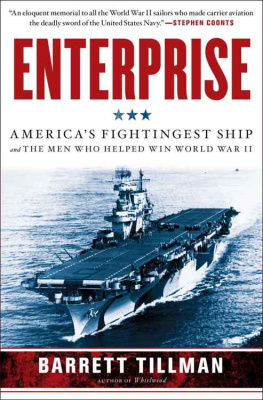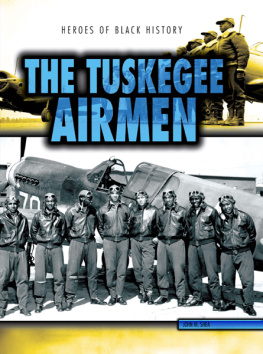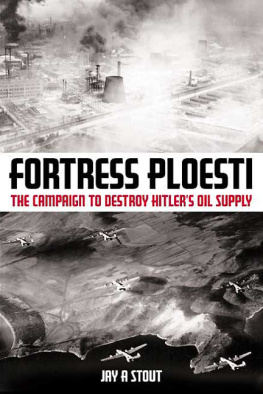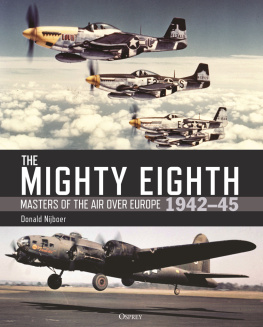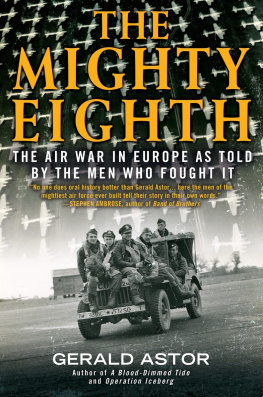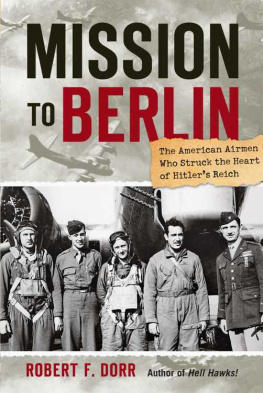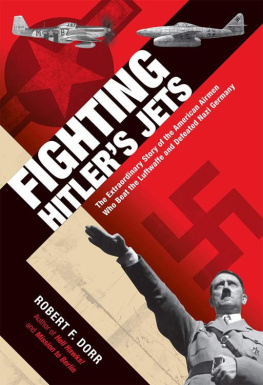


Copyright 2014 by Barrett Tillman
All rights reserved. No part of this publication may be reproduced or transmitted in any form or by any means electronic or mechanical, including photocopy, recording, or any information storage and retrieval system now known or to be invented, without permission in writing from the publisher, except by a reviewer who wishes to quote brief passages in connection with a review written for inclusion in a magazine, newspaper, website, or broadcast.
First ebook edition 2014
eISBN 978-1-62157-235-0
The Library of Congress has cataloged the hardcover edition as follows:
Tillman, Barrett.
Forgotten Fifteenth : the daring airmen who crippled Hitlers war machine / Barrett Tillman.
pages cm
Includes bibliographical references and index.
1. United States. Army Air Forces. Air Force, 15th. 2. World War, 1939-1945--Aerial operations, American. 3. World War, 1939-1945--Campaigns--Mediterranean Region. I. Title.
D790.2215th .T55 2014
940.544973--dc23
2014001772
Published in the United States by
Regnery History
An imprint of Regnery Publishing
A Salem Communications Company
300 New Jersey Avenue NW
Washington, DC 20001
www.RegneryHistory.com
10 9 8 7 6 5 4 3 2 1
Books are available in quantity for promotional or premium use. Write to Director of Special Sales, Regnery Publishing, Inc., One Massachusetts Avenue NW, Washington, DC 20001, for information on discounts and terms, or call (202) 216-0600.
Distributed to the trade by
Perseus Distribution
250 West 57th Street
New York, NY 10107
Dedicated to the members of the
U.S. Army Air Forces who served in the
Mediterranean Theater of operations
during the Second World War.

CONTENTS

I n early 2012 a World War II veteran of the Eighth Air Force, which had been based in Britain, asked if I were writing another book. When I told him the subject, he almost scoffed. The Fifteenth? They were down there in Italy. Why write about them?
I bit my lip then replied, Because they helped win the war.
Probably no one knows how many books have been published about the Mighty Eighth, but there have been dozens, even excluding unit histories. This, however, is the first full-length history of the Forgotten Fifteenth, which conducted the southern half of the Allied strategic bombing campaign in Europe. After nearly seventy years, the Fifteenths story is long, long overdue for a telling.
And what a story it is.
During a hard-fought, four-month campaign in the spring and summer of 1944, the Fifteenth shut down the Axis powers main source of oil. The cost was highnearly 240 aircraft lost and their crews killed or capturedbut the effort was ultimately worthwhile. The near-total destruction of the Ploesti complex in Romania had far-reaching consequences for the German war machine.
Yet in its eighteen months of operationsfrom November 1943 to V-E Day in May 1945the Fifteenth accomplished more than turning off Hitlers Balkan oil tap. The five bombardment wings struck other petroleum targets throughout the southern and central Reich, ruined enemy communications, and constantly hammered sources of production. Not all were in Germany, as Fifteenth airmen operated in the airspace of a dozen other Axis or occupied nations.
Even more than writing an operational history, I want to tell the story of the Forgotten Fifteenth as an institution. That would be impossible without a bottom-up perspective, from the flight lines on Foggia airfields to headquarters in Bari. I gained an education in researching this book, often drawing upon interviews conducted decades ago.
I have ensured that every Fifteenth Air Force flying groupif not every unitis mentioned in this book. The veteran contributors represent eight of the Fifteenths bomb groups and four fighter groups plus three Luftwaffe units. Coverage of the famed Red Tails of the 332nd Fighter Group is proportionate to their role among the other twenty-nine groups of the Mediterranean strategic air force.
Aviation purists note that Germanys famous Messerschmitt Me 109 fighter actually was the Bf 109, for Bayerische Flugzeugwerke or Bavarian Aircraft Factory. The Me designation was adopted in 1938 and applied to new designs from that date. I have used both the Bf and Me designations where appropriate.
Barrett Tillman
March 2013

T he bombers crossed the Alps at Brenner Pass, northbound for Munich. At 4,500 feet elevation, Brenner was among the lowest of the alpine passes, its late spring verdancy spanning the border between Italy and Austria.
Some four hundred miles north of their Italian bases, the bombers were well along the route toward Innsbruck and into southern Germany. By the time they crossed the pass, they were established at cruise speed, making 180 to 210 mph four miles above the gap in the spine of Europe.
A few airmen reflected that Brenner Pass was accustomed to conflict; they thought the Carthaginian genius Hannibals surviving war elephants may have used the same passage into Italy twenty-two centuries before.
Some fliers had made the trip more than twenty times, but they seldom failed to take in the gorgeous scenery. The Alps often defied description: the crystalline clarity of the high whiteness was unlike anything most fliers had ever seen. Even those who had trained in the American West had little to compare to it: the Sierra Nevada had more peaks topping thirteen thousand feet but covered less than one-third the area of the Alps. Craggy mountains, snow-capped much of the year, towered on either side of the green valley. It was a view that few Europeanslet alone Americanshad ever seen. Not until the postwar boom in commercial aviation would large numbers of air travelers see Brenners beauty from above.
The young Americans looking down on the scene, however, took only passing note. Most were under twenty-five years old; probably none were over forty. The purpose of their flight was far removed from sightseeing. Each of the five hundred bombers bore four or five tons of high explosives, destined for the armories that supplied the Wehrmacht.
The visitors flew in miserable conditions. Five miles above sea level, they sucked bottled oxygen through rubber hoses and masks, leaving their mouths and throats dry and raspy. The cold penetrated their electrically heated suits, gloves, and boots. The temperature at that altitude hovered around thirty degrees below zero Fahrenheit. Frostbite was a frequent cause of casualties. Waist gunners flexed their legs and bent their knees; most stood at their windows for the entire six-hour mission. The tubes in which the men relieved themselves froze, and many bombers had no chemical toilets. Some crews resorted to cardboard boxes.
Next page

